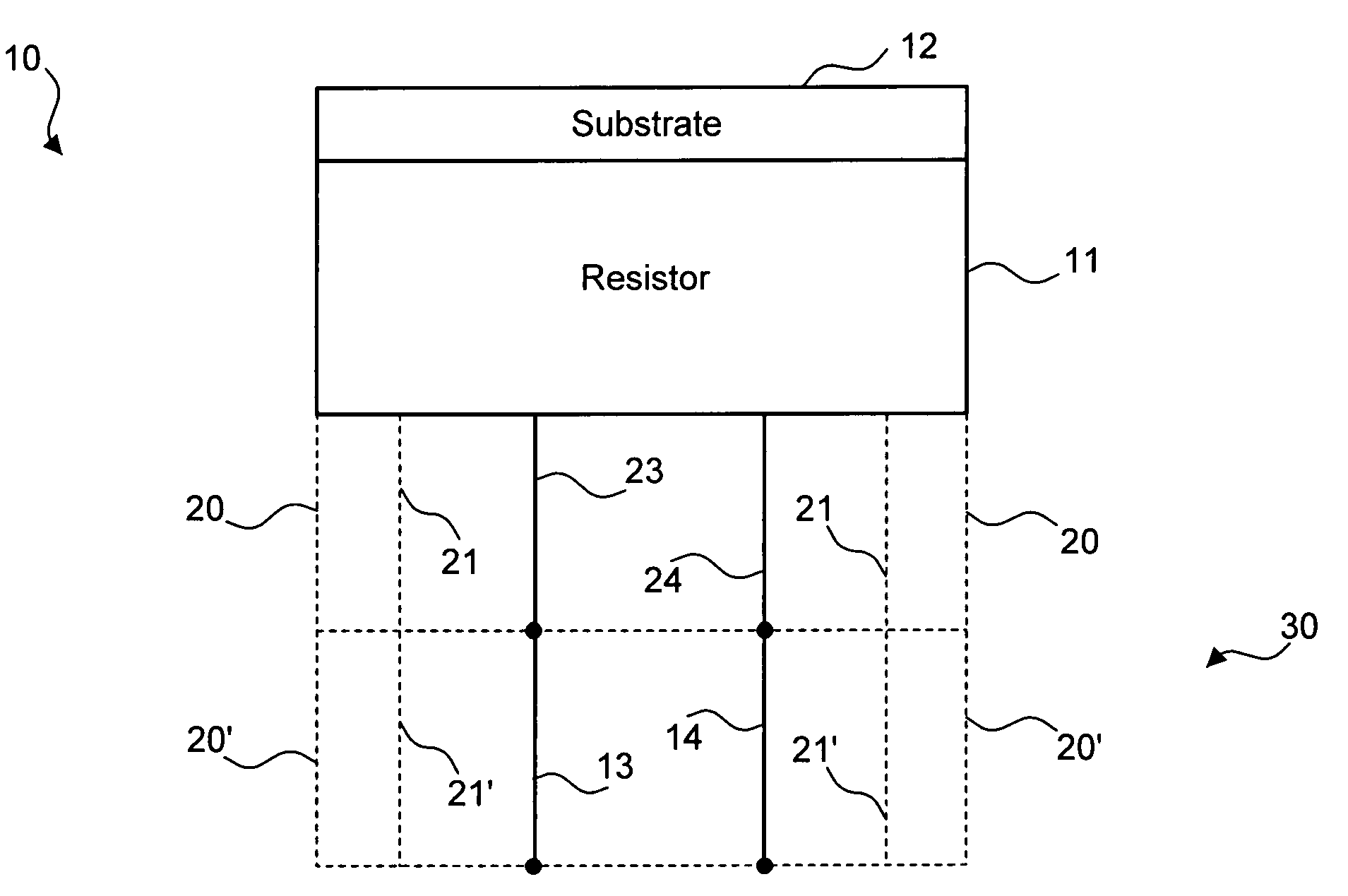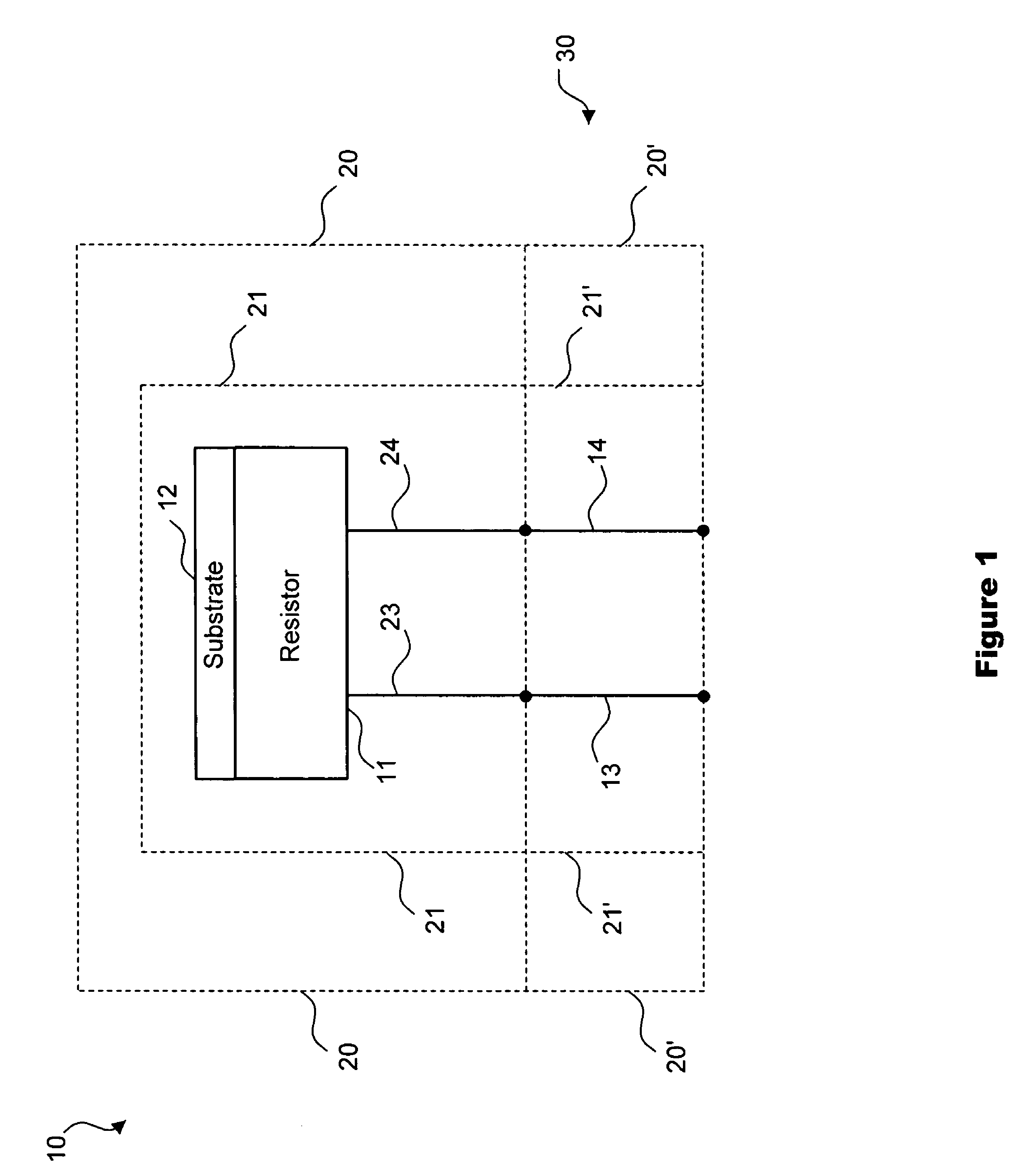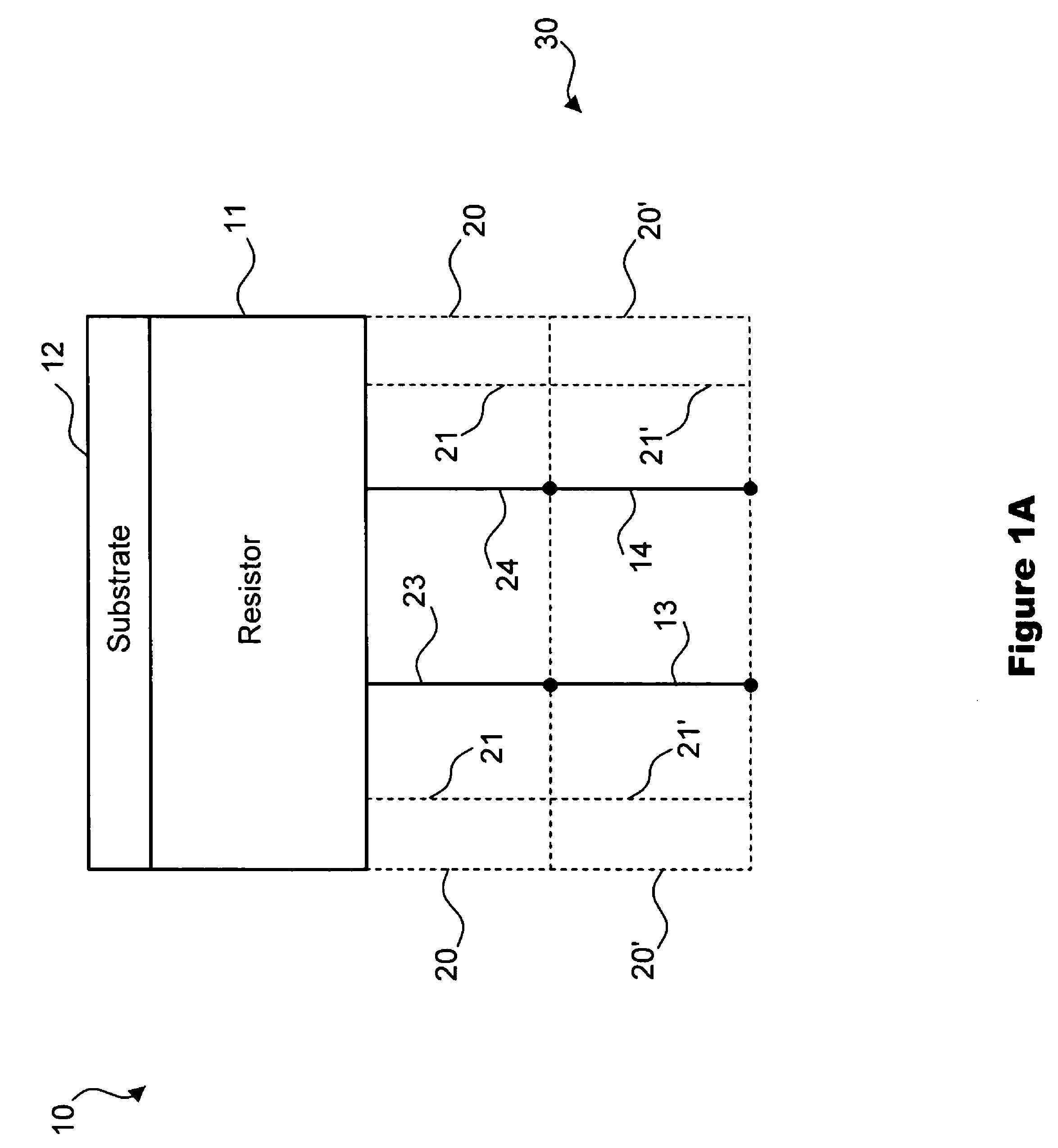Thermal variable resistance device with protective sheath
a technology of variable resistance and protective sheath, which is applied in the direction of thermometer details, instruments, heat measurement, etc., can solve the problems of material damage, substantial mechanical strength decline, and current temperature sensors limited to an operating envelop
- Summary
- Abstract
- Description
- Claims
- Application Information
AI Technical Summary
Benefits of technology
Problems solved by technology
Method used
Image
Examples
Embodiment Construction
[0049]Referring now to the drawings, wherein like reference numerals designate corresponding structure throughout the views.
[0050]FIG. 1 is a block diagram illustrating one preferred embodiment of the present invention showing sensor 10. A substrate 12 is shown in contact with a resistor 11. Also shown are first conductor 23 and second conductor 24 electrical both of which are shown connected to resistor 11.
[0051]Sensor 10 is further illustrated in FIG. 1 with insulation 21. The insulation may comprise any suitable insulating material desired including but not limited to a refractory ceramic material such as for instance, Al2O3 or MgO. Although insulation 21 is shown in FIG. 1 enclosing sensor 10, it is contemplated that insulation 21 may only enclose a portion of sensor 10, such as for instance, first and second conductors 23, 24 or resistor 11, or any other portion thereof.
[0052]Also illustrated in FIG. 1 is sheath 20 shown enclosing insulation 21. Sheath 20 may comprise, for inst...
PUM
| Property | Measurement | Unit |
|---|---|---|
| temperatures | aaaaa | aaaaa |
| temperature | aaaaa | aaaaa |
| resistance temperature | aaaaa | aaaaa |
Abstract
Description
Claims
Application Information
 Login to View More
Login to View More - R&D
- Intellectual Property
- Life Sciences
- Materials
- Tech Scout
- Unparalleled Data Quality
- Higher Quality Content
- 60% Fewer Hallucinations
Browse by: Latest US Patents, China's latest patents, Technical Efficacy Thesaurus, Application Domain, Technology Topic, Popular Technical Reports.
© 2025 PatSnap. All rights reserved.Legal|Privacy policy|Modern Slavery Act Transparency Statement|Sitemap|About US| Contact US: help@patsnap.com



